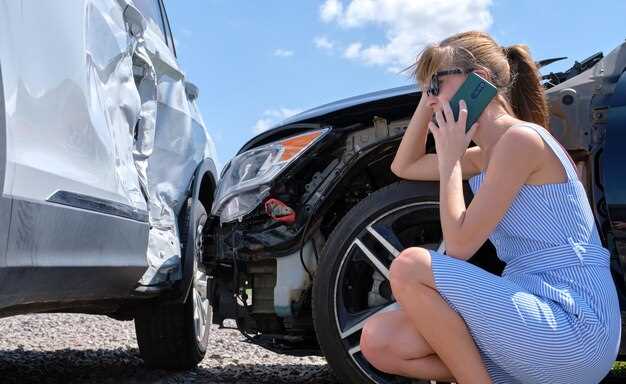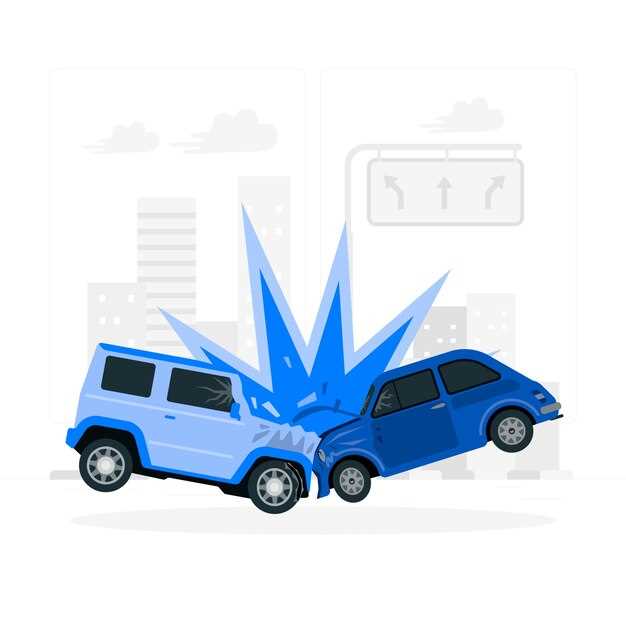
When purchasing a used vehicle, ensuring its condition is paramount. One of the most concerning issues that can be hidden from plain sight is collision damage. This type of damage may not always be immediately visible, particularly if the vehicle has been poorly repaired or if crucial components, such as the frame, have been compromised.
Potential buyers should be vigilant for subtle clues that may indicate a vehicle has experienced a significant collision. These signs can range from irregular panel gaps to misaligned body parts, which could be telltale markers of hidden damage. Understanding these signs can save buyers from costly repairs and ensure they are making a sound investment.
In this article, we will explore the various indicators of concealed collision damage, helping you navigate the complexities of used vehicle assessment. By familiarizing yourself with the signs of hidden damage, you can better protect yourself against potential pitfalls in your vehicle purchase journey.
Identifying Inconsistent Body Panel Gaps and Alignments

When inspecting a vehicle for hidden collision damage, one of the key indicators to look for is inconsistent body panel gaps and alignments. These discrepancies can serve as significant clues that a vehicle has been involved in an accident, particularly if repairs were made improperly or if the frame sustained damage that wasn’t adequately addressed.
Body panels, such as doors, fenders, and hoods, should align seamlessly along their edges. A uniform gap typically ranges from 3 to 5 mm. If you notice variations where one panel overlaps or is spaced unevenly compared to another, this may signal that the vehicle has suffered a significant impact. Misshapen gaps not only hint at superficial repair issues but can also indicate deeper structural problems with the frame, which might have been compromised during an accident.
Moreover, panels that appear misaligned or unevenly positioned could suggest that they were either replaced or inaccurately realigned after a collision. Pay close attention to how well the panels meet at the seams. If they are loose or bulging, this might reveal underlying damage that requires expert evaluation. In such cases, a professional inspection may be necessary to assess the vehicle’s frame integrity and ensure that it is safe to drive.
In conclusion, when assessing a used vehicle, be vigilant about observing the alignment and gaps between body panels. These signs can provide essential insights into potential past accidents and help determine if the vehicle has been restored to its original condition.
Recognizing Warning Signs of Frame Damage During Inspection

During a vehicle inspection, identifying signs of frame damage is crucial, especially if the vehicle has been involved in an accident. The frame is the backbone of the vehicle’s structure, and any damage can significantly impact its safety and performance. Inspectors should look for several warning signs that may indicate underlying issues.
One of the primary indicators of frame damage is uneven tire wear. If the tires show excessive wear on one side, it may suggest that the frame is bent or misaligned. Inspectors should also examine the vehicle’s suspension components for any signs of stress, such as cracked or broken parts, which could stem from underlying frame problems.
Another key area to assess is the alignment of the panels. Gaps between doors, hoods, and fenders may signal that the frame has been warped or distorted due to an impact. Inspectors should pay close attention to inconsistencies in panel alignment, as this can reveal hidden collision damage.
Inspecting the welds and joints of the frame is essential. Any signs of rust, discoloration, or poor weld quality may indicate prior repairs following an accident. Rust can weaken the integrity of the frame, making it a safety concern for the vehicle’s future use.
The underside of the vehicle should also be checked for evidence of damage. Look for signs of repairs, such as new paint or welds, as well as evidence of buckling or bending in the frame itself. These signs often indicate previous collisions that may not have been disclosed by the seller.
Finally, performing a thorough test drive can help detect frame damage. Listen for unusual noises or vibrations that could point to structural issues originating from the frame. A vehicle that pulls to one side may also indicate alignment problems due to frame damage.
In summary, recognizing the warning signs of frame damage during an inspection involves careful observation of tire wear, panel alignment, weld quality, structural integrity, and test drive performance. Awareness of these factors can lead to better-informed decisions when purchasing a used vehicle.
Understanding the Role of Paint and Rust as Accident Indicators
When assessing a vehicle for hidden collision damage, the condition of the paint and the presence of rust can provide essential clues. Paint discrepancies, such as mismatched colors or uneven textures, may indicate that a vehicle has undergone repairs after an accident. A thorough inspection of the paint surface can reveal areas where respraying has occurred, often characterized by overspray or dull finishes that suggest recent touch-ups.
Rust is another critical factor in determining a vehicle’s history. While surface rust can develop over time due to exposure to the elements, the presence of rust on recently repaired areas may signal insufficient treatment following an accident. If rust appears in spots that are typically prone to damage, such as wheel wells or undercarriage components, it may suggest that the vehicle has been compromised in a collision. Additionally, rust can undermine the integrity of the car’s structure, leading to further complications down the road.
Understanding how paint and rust interact in the context of potential accident damage is crucial for vehicle buyers and inspectors alike. Not only do these elements provide clues regarding past incidents, but they also offer insight into the quality of repairs and overall maintenance of the vehicle. A careful examination of these indicators can save prospective owners from costly surprises in the future.




